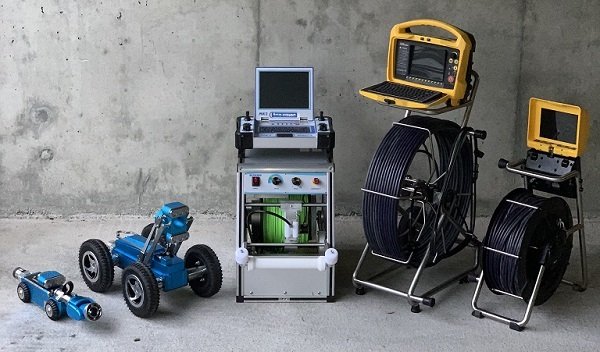Beneath the dirt and pavement of our frantic towns and cities lie complex networks of pipes. Because they deliver vital resources like water, sewage, and natural gas to residences, workplaces, and factories, these pipes serve as the cornerstone of contemporary civilization. On the other hand, there are serious problems with their removal during building and refurbishment. Mishaps with this subterranean network might result in expensive losses, interruptions to services, or even fatalities. Thus, pipeline locating becomes a crucial step in building projects, guaranteeing its efficiency, success, and security.

Understanding Pipeline Locating
Pipeline discovery is a tedious operation that needs to be done before any excavation or building work is done. It entails accurately finding subterranean pipes and mapping them. It is made up of several types of pipelines, such as sewage mains, gas transmission lines, water distribution pipes, and telecommunications conduits. To avoid unintentional damage during building activities, the main goal is to precisely ascertain the depth, alignment, and material composition of these pipes.
The Need for Accurate Pipeline Locating
The importance of accurate pipeline location cannot be overstated. A pipeline strike that occurs during construction may have detrimental effects on the environment, the construction industry, and consumers, in addition to financial responsibilities and safety hazards. For instance, damage to a gas pipeline might cause leaks, fires, or explosions that would immediately endanger the residents and workers in the area. Likewise, water main breaks can result in water loss, property damage, and disruptions to essential services.
Technologies Used in Pipeline Locating
Different technologies, each with specific benefits and uses, are used in pipeline locations. Electromagnetic waves are used by Ground Penetrating Radar (GPR) to identify things below the surface and provide fine-grained photographs of utilities below the surface. Metallic pipes that are underground can be found using electromagnetic (EM) induction, which detects changes in electromagnetic fields. Utilizing sophisticated equipment, radio detection entails locating and tracking signals sent by subterranean utilities. Acoustic techniques use sound waves to locate pipeline breaches or obstructions.
Pipeline Locating Equipment and Tools
Accurate pipeline locating surveys require specialized instruments and equipment. These include utility mapping software, cable and pipe locators, metal detectors, ground-penetrating radar devices, and electromagnetic locators. To get accurate findings, it is essential to make sure the equipment is correctly calibrated, maintained, and handled by qualified personnel.
Pipeline Locating Procedures
Locating pipelines requires a number of methodical steps to guarantee accuracy and thorough coverage. This entails carrying out exhaustive pre-construction planning and investigation in order to locate current utility maps and documentation. Subsequently, on-site surveys and inspections are carried out using the proper locating equipment to confirm the existence and position of subterranean pipes. Accurate records of pipeline locations, depths, and dimensions are compiled through data interpretation and mapping. To guarantee adherence to safety standards and laws, cooperation with utility owners, stakeholders, and regulatory organizations is essential at every stage of the procedure.
Benefits of Pipeline Locating
There are several advantages to precise pipeline location. Teams working on building projects may prevent expensive damages, interruptions to services, and safety risks by locating and charting subterranean pipes. Precise pipeline location also makes project planning and execution easier, lowering the possibility of delays, rework, and legal issues. Furthermore, by lowering the possibility of unintentional utility strikes, it improves worker safety, public health, and environmental protection.
Challenges and Considerations
While pipeline site offers many benefits, there are also challenges and considerations that must be made. The precision and effectiveness of survey locating might be affected by environmental factors such as soil composition, groundwater levels, and plant cover. Topography issues, such as rocky terrain, inaccessible locations, and crowded urban areas, might make locating jobs more difficult to complete. Regulation compliance and authorization processes need to be properly controlled because they vary by country in order to ensure both legal compliance and project success.
Private Locating Services
In order to precisely discover and map subterranean pipes, private locating services—which provide specialized knowledge, tools, and resources—play a crucial role in pipeline location. For building projects where precision, effectiveness, and safety are crucial, these services are especially beneficial. Pipeline-finding techniques and technology are well-versed by skilled specialists working for private line locators. To guarantee the effective completion of pipeline locating studies, they work closely with construction teams, utility owners, and regulatory bodies.
Private Line Locators in Seattle
Seattle, private line locators, provide comprehensive pipeline locating services that are tailored to the unique requirements and challenges of the area. These professionals adapt their services to match the particular needs of construction projects in the Seattle metropolitan area by leveraging their expertise and knowledge. Private line locators in Seattle provide important support to construction teams in navigating complex metropolitan regions, abiding by local rules, and minimizing environmental issues.

























